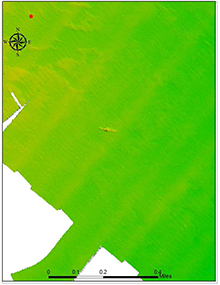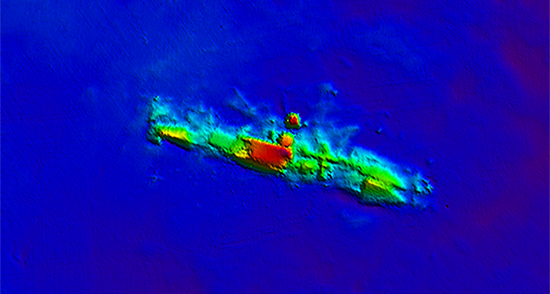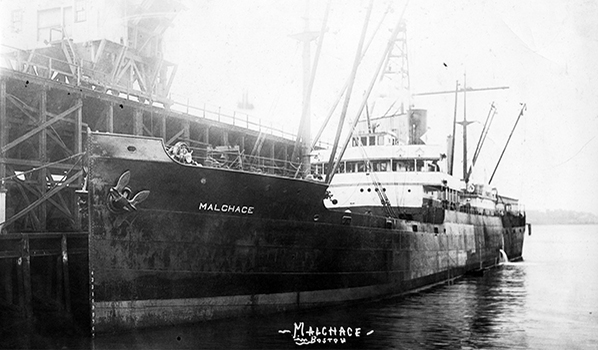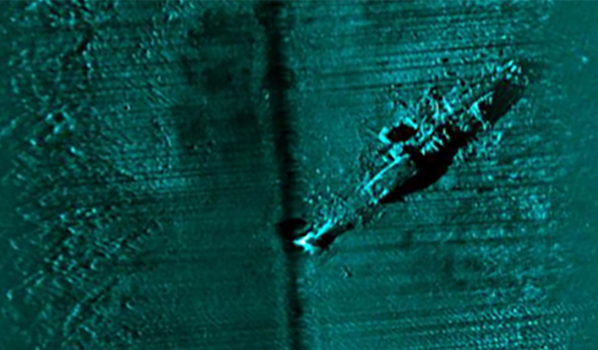Malchace
Ship Stats
Location: 34°36'15.37"N, 75°47'13.31"W (34.60427, -75.78703)
Depth: 205 feet
Vessel Type: Freighter
Length: 333.8 feet Breadth: 48.0 feet
Gross Tonnage: 3,516 Cargo: 3,628 tons of soda ash
Built: 1920, Merrill-Stevens Ship Building Corp., Jacksonville, Florida, USA
Hull Number: Unknown Port of Registry: Wilmington, Delaware, USA
Owner: Marine Transport Lines, Inc., New York, New York, USA
Lloyd's Register Details: Steel hull, fitted for oil fuel, longitudinal framing, one deck, triple expansion three cylinder steam engine
Former Names: Chickamauga (United States Shipping Board, 1920-1929)
Date Lost: April 9, 1942
Sunk By: U-160 Survivors: 28 of 29 (1 dead)
Data Collected on Site: Multibeam and side scan sonar surveys
Significance: Casualty of World War II's Battle of the Atlantic
Wreck Site

The wreck site is located in over 200 feet of water in the Gulf Stream, southeast of Ocracoke, North Carolina. From the sonar data collected at the site and according to dive reports, the wreck is lying on its extreme port side and is almost upside down. The hull is basically intact and the boilers are visible. The stern provides the highest form of relief of the wreck.

Historical Background
In early April of 1942, Malchace was transiting alone carrying a load of soda ash from Baton Rouge, Louisiana, to Hopewell, New Jersey. Disaster struck in the early morning hours on April 9, when U-160 attacked the unarmed Malchace. The ship was struck by a torpedo on the port side, just forward of the number four hold. The captain, Henry F. Magnusdal, ordered all engines stopped. While the crew began to assess the damage, U-160 surfaced and circled the ship before sending a second torpedo into Malchace's port side just aft of the number three hold. The explosion blew a hole in the bulkhead, and the engine room quickly flooded. After the second torpedo strike, the captain ordered the crew to abandon ship. All but one of the 29 crewmembers made it safely to the lifeboats.
Within a few hours, Malchace sank. As the survivors were rowing towards the shore in the still dark morning, they witnessed the explosion and resulting fire from another sinking merchant ship, the tanker Atlas, that had been torpedoed by U-552. Later that morning, the lifeboats were spotted by a passing Mexican tanker, Faja de Oro. The survivors were rescued and later transferred to a guard vessel at Cape Henry, Virginia, and taken to Norfolk, Virginia.



